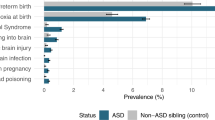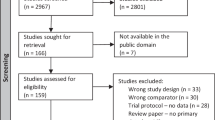Abstract
Objective:
The objective of this study was to longitudinally evaluate the neurodevelopmental (ND) outcome in congenital diaphragmatic hernia (CDH) survivors during the first 3 years of life.
Study Design:
The study cohort consists of 47 CDH survivors that were enrolled in our prospective, follow-up program between July 2004 and September 2010, and underwent serial ND evaluations during the first 3 years of life. ND outcomes were evaluated using the Bayley Scales of Infant Development (BSID)-II or BSID-III. Persistent ND impairment was defined as a score that remained ⩽79 for the cognitive, language and psychomotor domains at the most recent follow-up visit compared with the first assessment.
Result:
The median age at first and last evaluation was 8 (range, 5 to 15) and 29 (range, 23 to 36) months, respectively. During the follow-up, ND scores improved to average in 17%, remained average in 60%, remained delayed in 10%, improved from severely delayed to mildly delayed in 2% and deteriorated from average to delayed in 15%. Motor scores improved to average in 26%, remained average in 55%, remained delayed in 8% and improved from severely delayed to mildly delayed in 11%. Intrathoracic liver position (P=0.004), preterm delivery (P=0.03), supplemental O2 requirement at day of life 30 (P=0.007), age at discharge (P=0.03), periventricular leukomalacia (PVL; P=0.004) and initial neuromuscular hypotonicity (P=0.01) were associated with persistent motor delays. No relationship was found between patient’s characteristics and the risk of persistent cognitive and language delays.
Conclusion:
(1) The majority of children with CDH are functioning in the average range by early preschool age, (2) most children who had early delays showed improvement in their ND outcome, (3) children showing delays in all the three domains were the least likely to show improvement and (4) CDH severity appears to be predictive of persistent psychomotor delays.
This is a preview of subscription content, access via your institution
Access options
Subscribe to this journal
Receive 12 print issues and online access
$259.00 per year
only $21.58 per issue
Buy this article
- Purchase on Springer Link
- Instant access to full article PDF
Prices may be subject to local taxes which are calculated during checkout
Similar content being viewed by others
References
Hedrick HL . Management of prenatally diagnosed congenital diaphragmatic hernia. Semin Fetal Neonatal Med 2010; 15: 21–27.
Danzer E, Hedrick HL . Neurodevelopmental and neurofunctional outcomes in children with congenital diaphragmatic hernia. Early Hum Dev 2011; 87: 625–632.
Chen C, Friedman S, Butler S, Jeruss S, Terrin N, Tighiouart H et al. Approaches to neurodevelopmental assessment in congenital diaphragmatic hernia survivors. J Pediatr Surg 2007; 42: 1052–1056.
Cortes RA, Keller RL, Townsend T, Harrison MR, Farmer DL, Lee H et al. Survival of severe congenital diaphragmatic hernia has morbid consequences. J Pediatr Surg 2005; 40: 36–45.
D'Agostino JA, Bernbaum JC, Gerdes M, Schwartz IP, Coburn CE, Hirschl RB et al. Outcome for infants with congenital diaphragmatic hernia requiring extracorporeal membrane oxygenation: the first year. J Pediatr Surg 1995; 30: 10–15.
Danzer E, Gerdes M, Bernbaum J, D'Agostino J, Bebbington MW, Siegle J et al. Neurodevelopmental outcome of infants with congenital diaphragmatic hernia prospectively enrolled in an interdisciplinary follow-up program. J Pediatr Surg 2010; 45: 1759–1766.
Friedman S, Chen C, Chapman JS, Jeruss S, Terrin N, Tighiouart H et al. Neurodevelopmental outcomes of congenital diaphragmatic hernia survivors followed in a multidisciplinary clinic at ages 1 and 3. J Pediatr Surg 2008; 43: 1035–1043.
Jaillard SM, Pierrat V, Dubois A, Truffert P, Lequien P, Wurtz AJ et al. Outcome at 2 years of infants with congenital diaphragmatic hernia: a population-based study. Ann Thorac Surg 2003; 75: 250–256.
Bernbaum J, Schwartz IP, Gerdes M, D'Agostino JA, Coburn CE, Polin RA . Survivors of extracorporeal membrane oxygenation at 1 year of age: the relationship of primary diagnosis with health and neurodevelopmental sequelae. Pediatrics 1995; 96: 907–913.
Rasheed A, Tindall S, Cueny DL, Klein MD, Delaney-Black V . Neurodevelopmental outcome after congenital diaphragmatic hernia: extracorporeal membrane oxygenation before and after surgery. J Pediatr Surg 2001; 36: 539–544.
Gischler SJ, Mazer P, Duivenvoorden HJ, van Dijk M, Bax NM, Hazebroek FW et al. Interdisciplinary structural follow-up of surgical newborns: a prospective evaluation. J Pediatr Surg 2009; 44: 1382–1289.
Hedrick HL, Danzer E, Merchant A, Bebbington MW, Zhao H, Flake AW et al. Liver position and lung-to-head ratio for prediction of extracorporeal membrane oxygenation and survival in isolated left congenital diaphragmatic hernia. Am J Obstet Gynecol 2007; 197 (422): e421–e424.
Danzer E, Gerdes M, D'Agostino JA, Bernbaum J, Siegle J, Hoffman C et al. Prospective, interdisciplinary follow-up of children with prenatally diagnosed giant omphalocele: short-term neurodevelopmental outcome. J Pediatr Surg 2010; 45: 718–723.
Hedrick HL, Crombleholme TM, Flake AW, Nance ML, von Allmen D, Howell LJ et al. Right congenital diaphragmatic hernia: prenatal assessment and outcome. J Pediatr Surg 2004; 39: 319–323.
Ahmad A, Gangitano E, Odell RM, Doran R, Durand M . Survival, intracranial lesions, and neurodevelopmental outcome in infants with congenital diaphragmatic hernia treated with extracorporeal membrane oxygenation. J Perinatol 1999; 19: 436–440.
Gischler SJ, van der Cammen-van Zijp MH, Mazer P, Madern GC, Bax NM, de Jongste JC et al. A prospective comparative evaluation of persistent respiratory morbidity in esophageal atresia and congenital diaphragmatic hernia survivors. J Pediatr Surg 2009; 44: 1683–1690.
Nijhuis-van der Sanden MW, van der Cammen-van Zijp MH, Janssen AJ, Reuser JJ, Mazer P, van Heijst AF et al. Motor performance in five-year-old extracorporeal membrane oxygenation survivors: a population-based study. Crit Care 2009; 13: R47.
van der Cammen-van Zijp MH, Gischler SJ, Mazer P, van Dijk M, Tibboel D, Ijsselstijn H . Motor-function and exercise capacity in children with major anatomical congenital anomalies: an evaluation at 5 years of age. Early Hum Dev 2010; 86: 523–528.
Frisk V, Jakobson LS, Unger S, Trachsel D, O'Brien K . Long-term neurodevelopmental outcomes of congenital diaphragmatic hernia survivors not treated with extracorporeal membrane oxygenation. J Pediatr Surg 2011; 46: 1309–1318.
Danzer E, Zarnow D, Siegle J, D'Agostino J, Gerdes M, Bebbington MW et al. Abnormal brain development and maturation in infants with congenital diaphragmatic hernia: semiquantitative assessment using MR imaging. J Pediatr Surg 2012; 47: 453–461.
Viholainen H, Ahonen T, Cantell M, Lyytinen P, Lyytinen H . Development of early motor skills and language in children at risk for familial dyslexia. Dev Med Child Neurol 2002; 44: 761–769.
Viholainen H, Ahonen T, Lyytinen P, Cantell M, Tolvanen A, Lyytinen H . Early motor development and later language and reading skills in children at risk of familial dyslexia. Dev Med Child Neurol 2006; 48: 367–373.
Webster RI, Majnemer A, Platt RW, Shevell MI . Motor function at school age in children with a preschool diagnosis of developmental language impairment. J Pediatr 2005; 146: 80–85.
Aylward GP, Aylward BS . The changing yardstick in measurement of cognitive abilities in infancy. J Dev Behav Pediatr 2011; 32: 465–468.
Author information
Authors and Affiliations
Corresponding author
Ethics declarations
Competing interests
The authors declare no conflict of interest.
Rights and permissions
About this article
Cite this article
Danzer, E., Gerdes, M., D'Agostino, J. et al. Longitudinal neurodevelopmental and neuromotor outcome in congenital diaphragmatic hernia patients in the first 3 years of life. J Perinatol 33, 893–898 (2013). https://doi.org/10.1038/jp.2013.47
Received:
Revised:
Accepted:
Published:
Issue Date:
DOI: https://doi.org/10.1038/jp.2013.47
Keywords
This article is cited by
-
Do FETO CDH survivors need the same follow-up program as non-FETO patients?
European Journal of Pediatrics (2023)
-
Effects of 1.5-T versus 3-T magnetic resonance imaging in fetuses: is there a difference in postnatal neurodevelopmental outcome? Evaluation in a fetal population with left-sided congenital diaphragmatic hernia
Pediatric Radiology (2023)
-
Work of breathing at different tidal volume targets in newborn infants with congenital diaphragmatic hernia
European Journal of Pediatrics (2022)
-
Neuropsychological outcome in survivors of congenital diaphragmatic hernia at 5 years of age, what does it tell?
European Journal of Pediatrics (2022)
-
Fetal brain morphometry on prenatal magnetic resonance imaging in congenital diaphragmatic hernia
Pediatric Radiology (2019)



